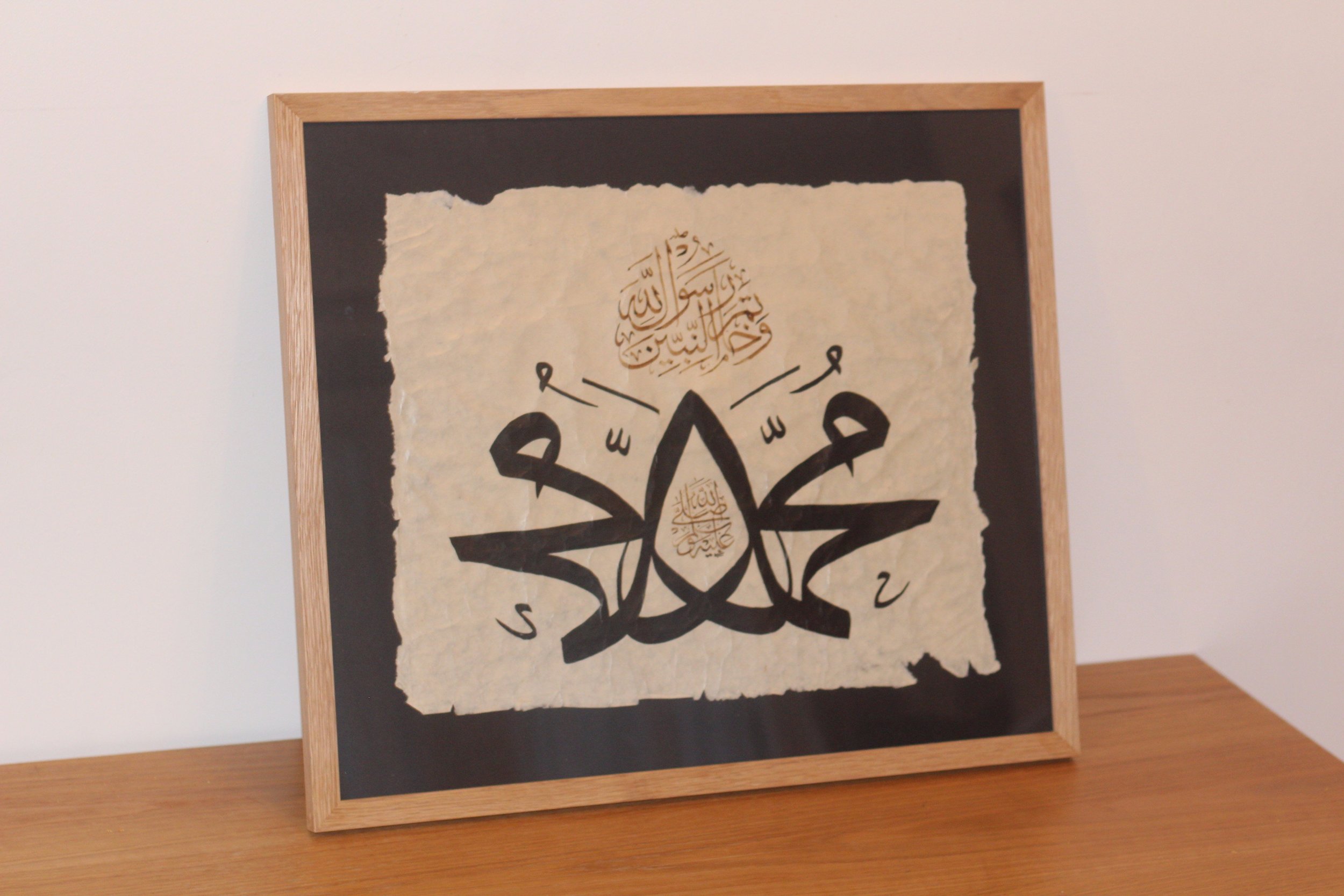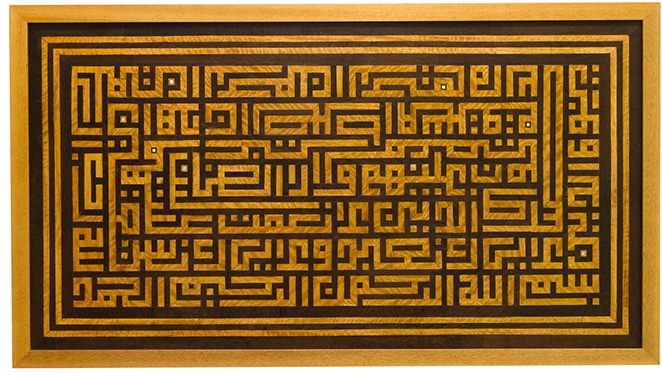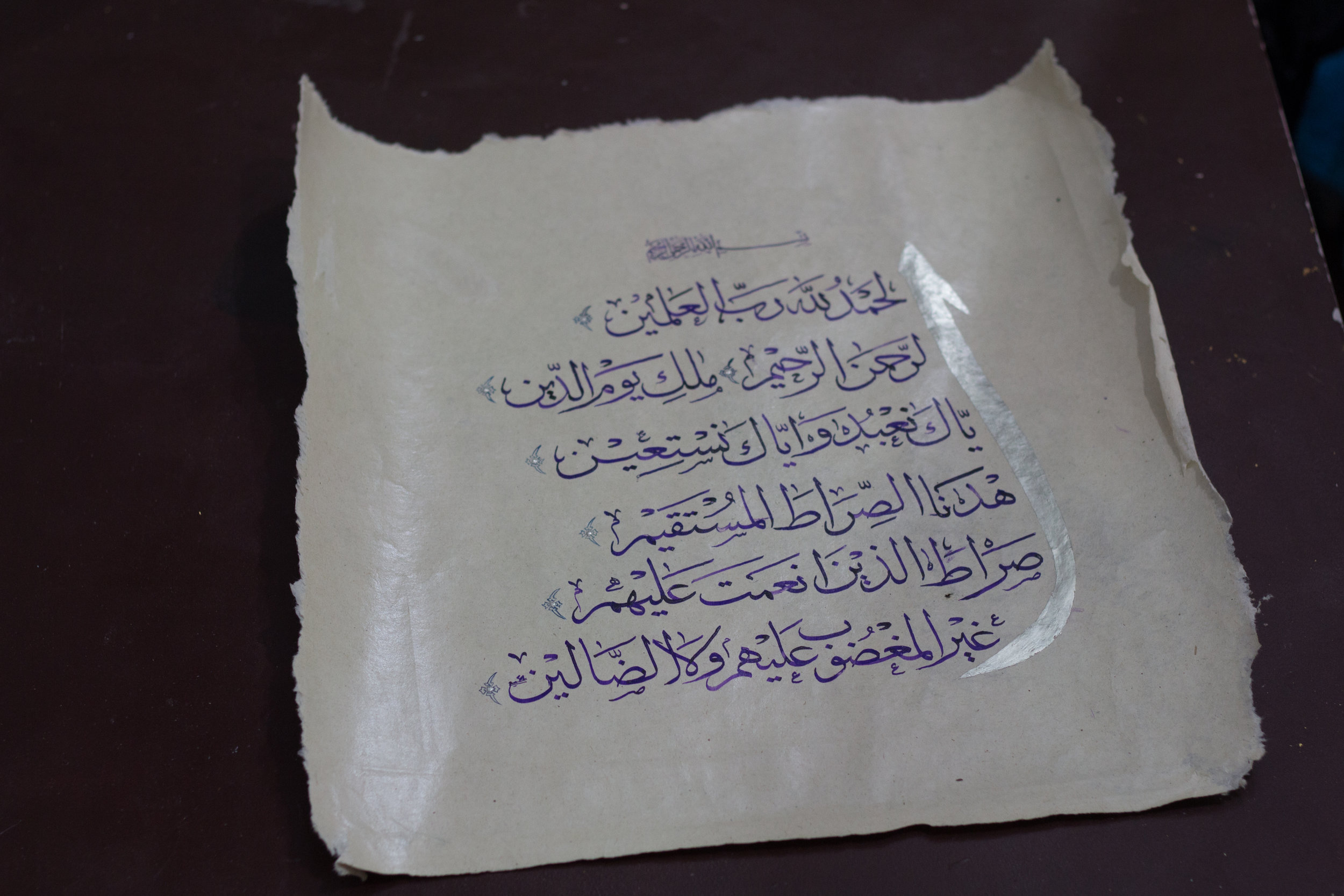As a student of calligraphy, I am always seeking advice and inspiration from practicing calligraphers and artists. It is interesting to learn about the different approaches to the art of Arabic calligraphy. This search brought me to Samiur Rahman. Rahman is an award-winning U.K. based artist and calligrapher. Take a look at his Instagram page and you will notice his unique talent in creating various expressions of calligraphic art including traditional calligraphy, wall art, parquetry, gilding, ceramics and graphic design, to name a few. His work embodies both traditionalism and modern fusion.
Samiur Rahman
Samiur Rahman hold a Masters in Visual Islamic & Traditional Art from the Prince’s Foundation in U.K. He is the co-founder of House of Calligraphy, an organization aimed to inspire the youth and revive the art of Islamic calligraphy in the U.K. In 2017, Samiur was awarded the Bagri Prize by Prince of Wales, awarded to outstanding students at the Prince’s Foundation. Samiur exhibits and teaches workshops all over the U.K.
I recently reached out to Samiur for an interview. And this is what he has shared with me about his work and his journey to the sacred art of Arabic calligraphy.
What inspired you to study calligraphy?
Having been a student of Quran and Hadith since a very young age, I was always drawn to the Arabic language and during my studies. I was very fortunate to have a teacher who was also a Master of the Nastaliq and Naskh scripts, Molana Muzaffar Hussain. This is where I began my journey learning under him for several years. Later on, whilst completing my Masters in Traditional Arts I came across my current teacher Nuria Garcia Masip, under whom I am learning the Thuluth script.
Surah Fatiha in arabic Thuluth script with the letter Alif gilded in white gold
What is it like practicing calligraphy in the U.K.?
Practicing calligraphy in the U.K. has required a lot of adaptation for many reasons; firstly, it is quite difficult to reflect the traditional ways where a student would go out in search for a teacher and stay in his /her Suhbat (companionship) for a number of years devoting himself/herself to that field. Similarly, the essence of a calligrapher is their materials; Qalam, Ink, paper, and much of the spiritual journey behind calligraphy is understanding these materials and becoming one with them prior to even the actual writing. And as the correct materials are very difficult to obtain in the UK and require sourcing from overseas, this becomes a barrier for most people. But, Alhamdulillah, in recent years the desire for learning the traditional arts has grown into an amazing community creating more supply and demand.
Basmala in Kufic script
How has calligraphy impacted your life?
Calligraphy has become my life. I really don’t know how else to put it. I feel that the only way to truly understand and appreciate any subject (especially art) is by committing yourself 100 percent to it.
The most important thing you have learned from your teacher(s).
Calligraphy is a lifelong journey and you can never stop improving. My teacher would say to us that getting your Ijaza (Diploma), doesn’t mean you have completed everything and you cannot become any better. It means that you have come to a point where you cannot get any worse. It is an art that teaches you numerous lessons: Practice, Patience & Perseverance. No matter how difficult or impossible something may seem, as long as you keep pushing yourself and keep at it you will automatically see yourself getting closer. You can practice 1 letter a thousand times and only get it right once however if you put your qalam away and give up you won’t get it right at all.
The name of Prophet Muhammad (pbuh) written in Muthanna style (mirror images); script: Thuluth
Your favorite calligraphers from the present and past.
First and foremost, my favorite calligrapher who I take ample amount of inspiration from are my teachers. Having that teacher / student connection (master / apprentice) teaches you so many aspects that you cannot learn from books.
Past calligraphers: Main Calligraphers would be the likes of Ibn Muqlah, Ibn Bawwab, Hafiz Osman who structured the letter forms into what they are today. Hamid Aytac is a personal favorite of mine (partly because my teacher comes from the Ottoman school of calligraphy).
For more information on Samiur Rahman's work, please visit his Instagram page: https://www.instagram.com/sami_hoc/; House of Calligraphy: https://www.instagram.com/hoc.official/
All photos courtesy of the artist.
Gallery of Samiur's work:









